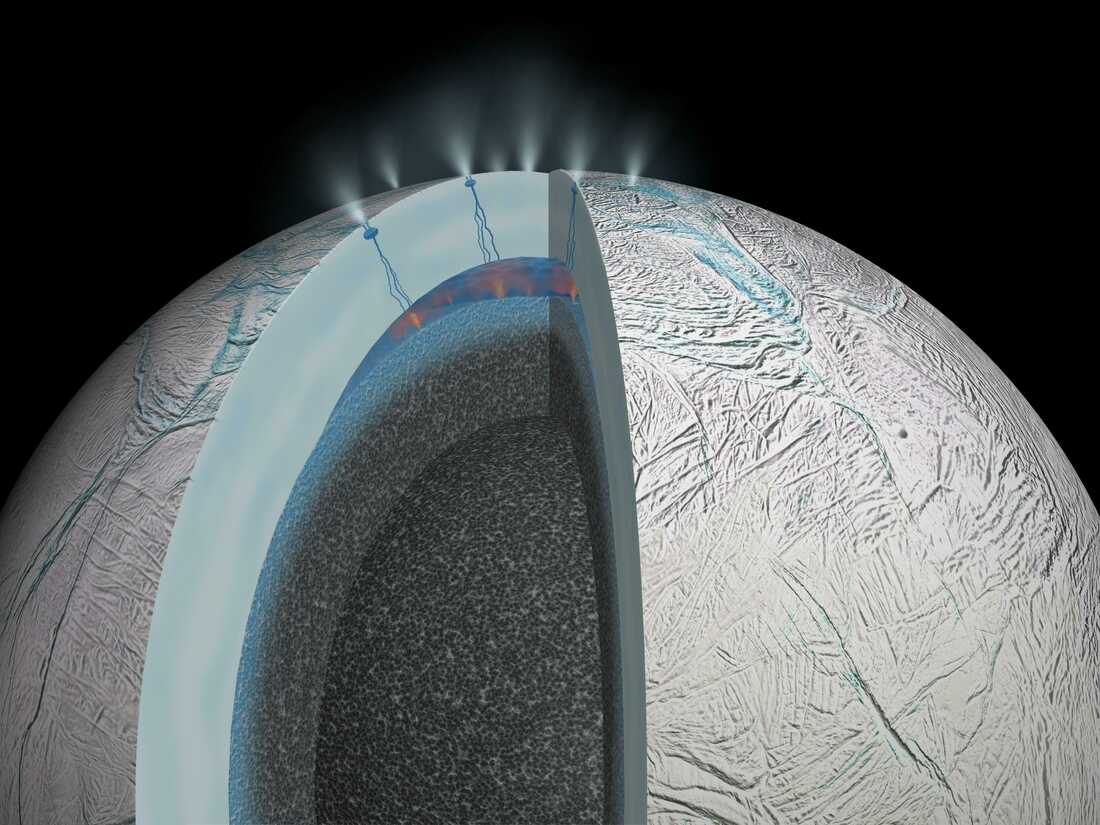A newly-discovered asteroid, and what's beneath the ice on Enceladus
By Regina G. Barber|Emily Kwong|Ari Shapiro|Brent Baughman|Christopher Intagliata|Gus Contreras|Berly McCoy
This cutaway view of Saturn's moon Enceladus is an artist's rendering that depicts possible hydrothermal activity that may take place on and under the seafloor of the moon's subsurface ocean. NASA/JPL-Caltech hide caption
toggle caption NASA/JPL-CaltechThis cutaway view of Saturn's moon Enceladus is an artist's rendering that depicts possible hydrothermal activity that may take place on and under the seafloor of the moon's subsurface ocean.
NASA/JPL-CaltechThis week's science news roundup All Things Considered host stops by to take a trip to space with hosts and .
How space affects these astronauts' brains
Scientists have only recently started to grapple with what space travel does to the human brain. A new study in points to changes in the brain caused by the absence of gravity — including shifts in cerebral spinal fluid — and suggests astronauts may need more time back on Earth between missions to recalibrate.
A new discovery on Saturn's icy moon, Enceladus
A of data from NASA's Cassini Mission reveals the presence of phosphorus on Saturn's moon Enceladus, at levels higher than in our own oceans on Earth. That points to possible conditions for life in an ocean that most likely exists beneath the moon's icy surface.
on the discovery of an asteroid with an orbit that tracks closely enough with Earth's to earn it the unofficial designation "quasi-moon." It might be one of the oldest such objects ever detected — some estimates say it's been hanging around since at least 100 BC, and could continue to do so until 3700 AD.


